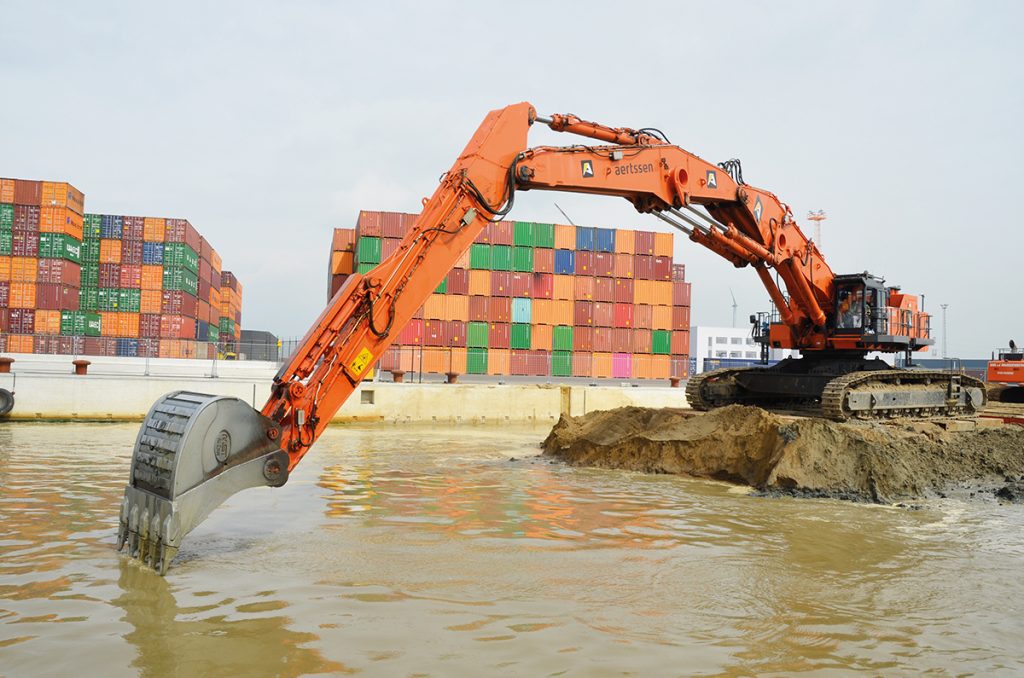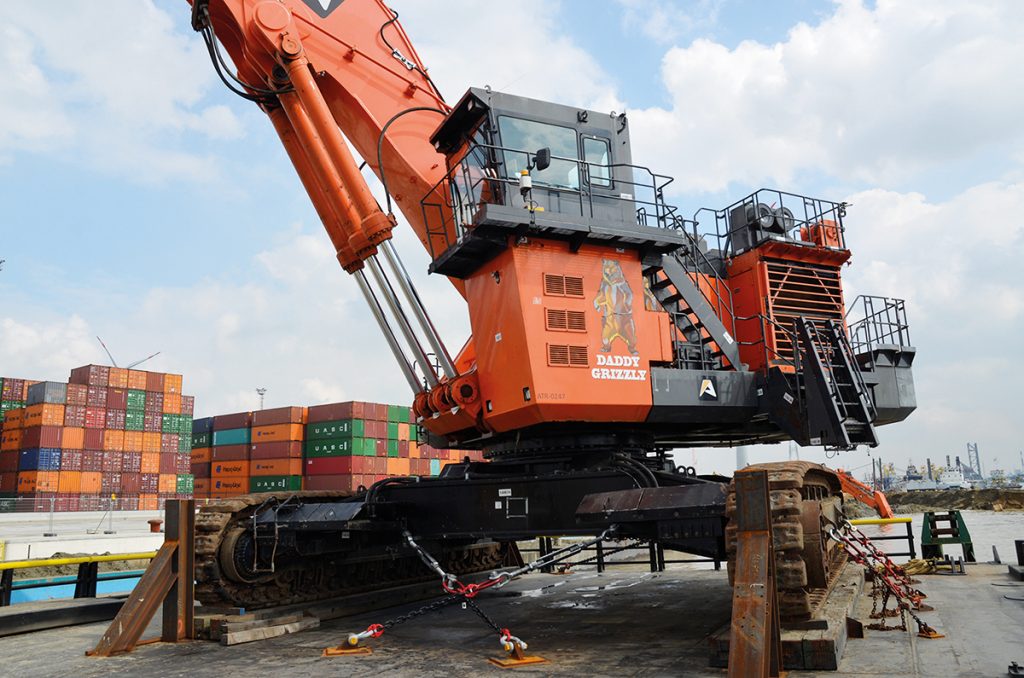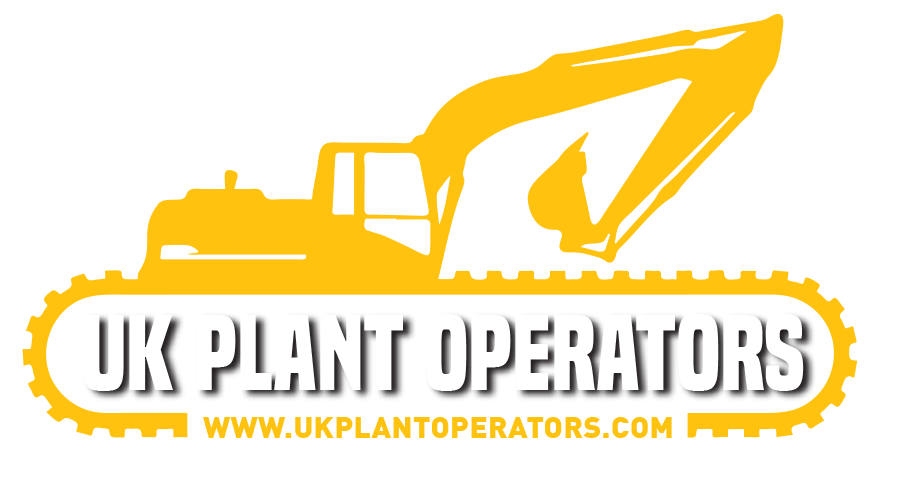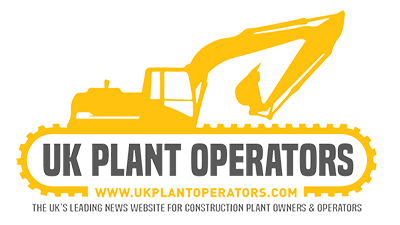![]()

With the works completed, the modified miner spent the first two-and-a-half years clocking up around 7,500 hours at a new breakwater project in Costa Rica. It returned to Antwerp in April last year for a mid-life rebuild (Aertssen generally replaces its excavators after 15,000 hours).
It remained in storage for five months and was floated to the current project at the end of January this year. The only way to reach the pontoon it stands on is by boat, so I timed my visit to arrive with the 2pm shift change.
Daddy Grizzly works two shifts (6am to 2pm and 2pm to 10pm) on week days. Operated by freelance Dutch operators and brothers Jeffrey and Danny Baars of Earth Moving Services, there was just enough time for a quick chat with Danny before Jeffrey took over to tweak the electrically-operated joysticks for the afternoon.
At this stage, it is worth discussing the project and the role of the two Hitachi excavators. The port of Antwerp, like many others, is preparing to accept ever-larger and deeper-hulled container vessels.
The project we visited concerns a 1.2km section of the port. Comprising a 3.0m capping above sheet piles, the old quay wall, which could cater for vessels with a maximum hull depth of 8.0m, has been demolished and replaced by a newer 17.0m deep structure.
Assisted by a bunch of other long-reach excavators (Cat 336, Cat 374F, Komatsu PC490), and a trailing cutter suction dredger, the two Hitachis are digging up the sediment from below the new quay wall. The EX1200 digs down to -6.0m, after which it is over to the EX1900 to tackle the remainder.

Jeffrey piloted the EX1900 for the full duration of the Costa Rica project (two months on/one month off). Working 12-hour shifts for seven days a week; four weeks of days were followed by four weeks of nights.
Digging under water is a lot different land-based work. The colour-coded Topcon terminal provides a great deal of under- water information, but this alone is not enough. “It is really important to have a mental picture of what I have dug up and what still needs to be tackled,” he says.
Jeffrey has pulled the levers on a Liebherr P995 and Komatsu PC3000 and is also familiar with the Cat 6015B. However, this is the largest Hitachi excavator he has piloted and he certainly seems to enjoy it. “People say it is big and slow. It is big but not slow. Loading into a barge the cycles are short, but on a wider arc it turns really fast.”
It is not just quick, but extremely powerful thanks to the standard Cummins QSK38 engine (1,086hp/810kw) and the combined efforts of the six x 335lit/min pumps. It can lift more, but in tests with the arm fully-stretched to 41.0m had no trouble lifting 20 tonnes.
“It is really powerful and can lift a D6,” says the operator. Also, he praises the visibility from the cab, which incidentally is at an eye level of over 7.5m from the deck of the pontoon.
The excavator’s standard 4,000-litre diesel tank is drained at the rate of around 3,000 litres for the two shifts (total 16 hours), during this time it digs up an average of around 2,000t/shift.
Given the choice, Jeffrey prefers placing rocks in a new breakwater. “Unlike digging under water, there is something to see at the end of a shift. There is nothing visible with under water work, but it is definitely a challenge. We must ensure that we do not miss anything.”
















